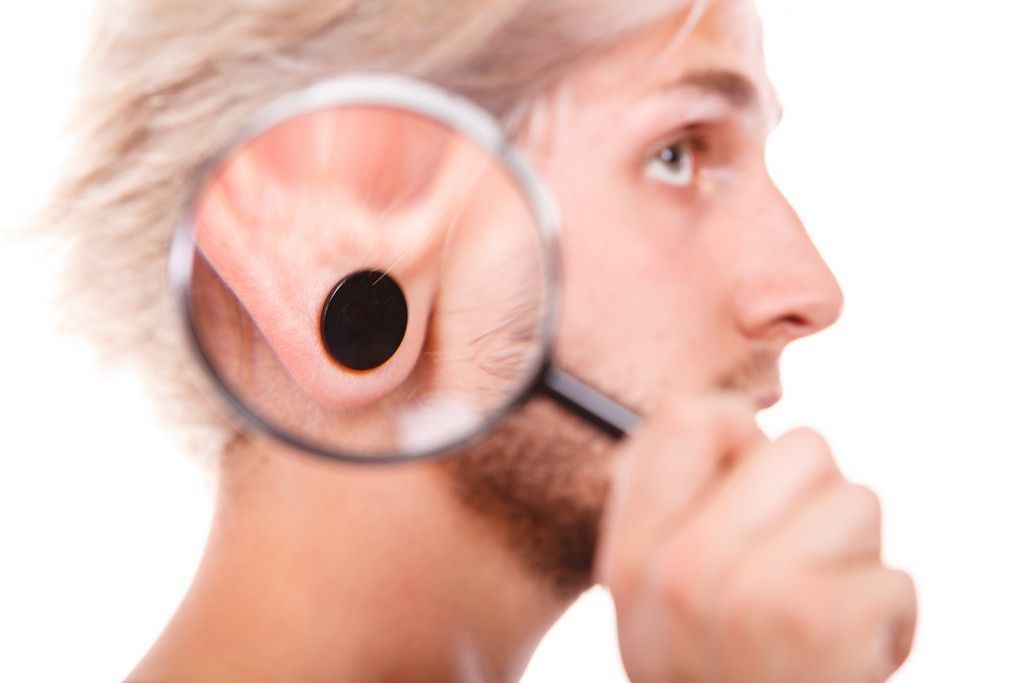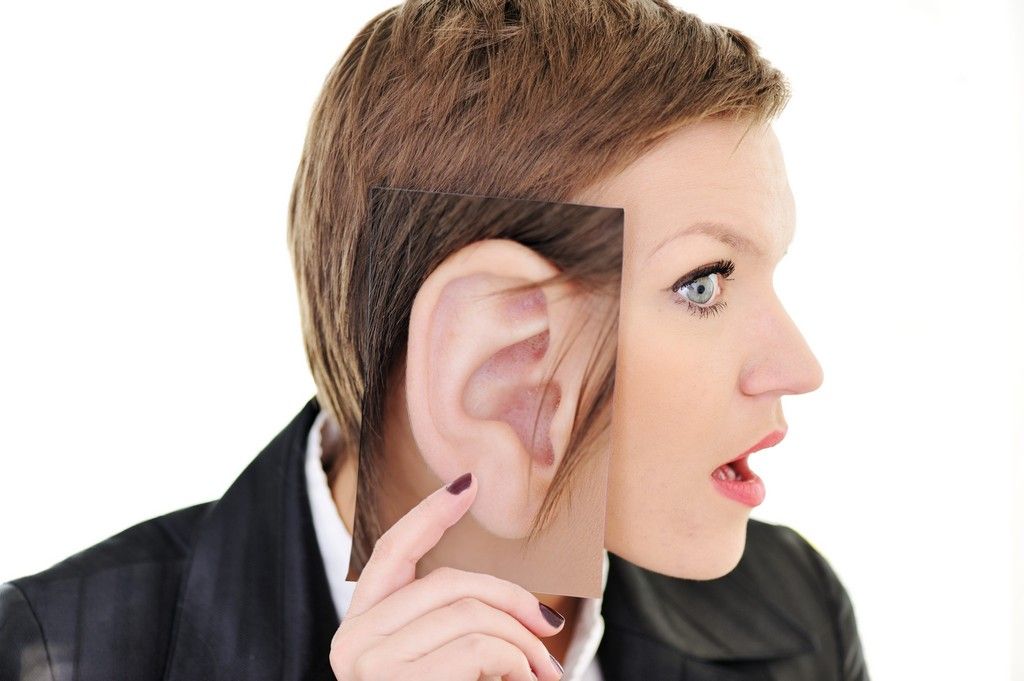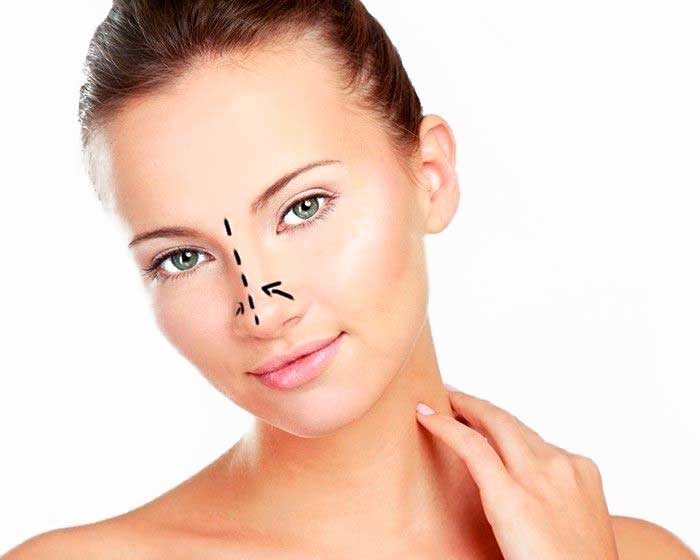Otoplasty, ear reconstruction
Ear reconstruction plastic surgery is indicated for people who have some kind of important deformity in their ears, or even for those who are born without ears or with only a part of them. It requires an assessment of the problem that affects each person so that the plastic surgeon can advise the most appropriate option for each case.
It can be confused with
ear malformation surgery
The difference is that this case is more indicated for people whose ear reconstruction cases are more important.
Clínica Sanza in Barcelona, is a reference center in the treatment of otoplasty.

Book a visit
You can do it in 3 ways:
– Free on-site visit: Call +34 932066540 from Monday to Thursday from 9:00 am to 6:00 pm and Friday from 9:00 am to 3:00 pm.
– Free on-site visit with IMMEDIATE booking: For booking outside office hours. We charge 60 € on your card to avoid false bookings. It is refunded on the day you come to the consultation.
– ONLINE Visit: Video conference using whatsapp or Zoom. Cost of 60 € non-refundable. When booking indicate in the comments that you want videoconferencing and not on-site.

Book a visit
You can do it in 3 ways:
– Free on-site visit: Call +34 932066540 from Monday to Thursday from 9:00 am to 6:00 pm and Friday from 9:00 am to 3:00 pm.
– Free on-site visit with IMMEDIATE booking: For booking outside office hours. We charge 60 € on your card to avoid false bookings. It is refunded on the day you come to the consultation.
– ONLINE Visit: Video conference using whatsapp or Zoom. Cost of 60 € non-refundable. When booking indicate in the comments that you want videoconferencing and not on-site.
WHERE DO WE OPERATE?
At Clínica Sanza we rely on the Sagrat Cor Hospital, part of the Quirónsalud group, to perform our surgical procedures.
Its prestige, facilities, medical and healthcare staff, as well as its technology are a guarantee.
BARCELONA: A HEALTH HUB
Do you want to know why it is worth coming to Barcelona for plastic surgery and why so many people come from abroad?
WE ORGANIZE EVERYTHING FOR YOU
Your trip, your flight, your operation, your transfer and your hotel with our support agency. We work with the best travel agencies worldwide.
PATIENT PROFILE
People who present a deformity due to traumatic causes such as tumors, accidents or scars.
People born with anotia or microtia, that is, without ears or a small outline.
PROCEDURE
It is usually more complex than cosmetic otoplasty. It may require 2 or 3 surgical times to first provide excess skin, and then cartilage or prosthesis to form the new ear.
DURATION OF THE INTERVENTION
- 3 to 4 hours
PROTOCOL
Preoperative
- Evaluation of the area to determine the adequacy of the treatment.
- Follow specific guidelines determined by the doctor
- CBC and tests on cardiac and respiratory status if needed
Anesthesia
- Local and sedation, or general
Hospitalization
- 24 h to 48 h if rib cartilage removal is required
Postoperative
- Bandage covering both pinnae
- Bandage removal after 48 hours
- Withdrawal of stitches between 10 and 15 days
- Medication if required
- Mandatory check-ups after a few days, a few weeks and a few months, according to prescription
Convalescence
- Do not clean wounds until 4 or 5 days
- No risky sports until 30 days
- Avoid direct exposure of the wound to the sun during this period.
RESULTS
- They usually require several touch-ups until the ears are evened out.
- Improvement of the patient’s psychological profile and self-esteem.
DEGREE OF DIFFICULTY
- Medium-high intervention
LEVEL OF RISK
- Medium-high
- Risks inherent to the intervention: possible recurrence requiring touch-up
- Risks of any operation: bleeding, infection, impaired healing
BEFORE/AFTER PHOTOS
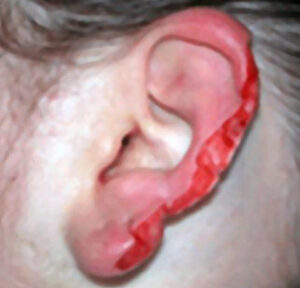
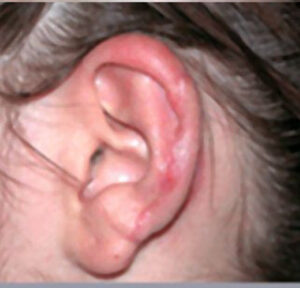
Whatever your case may be, do not hesitate to contact us.
Sanza Clinic in Barcelona, quality of service
Frequently asked questions about ear reconstruction surgery
What is ear reconstruction?
What is microtia?
A microtic ear or microtia is one that is much smaller than normal. It is a congenital malformation related to incomplete development of the ear in the fetal stage that presents uni or bilaterally. When the case is more severe, total absence may occur and is known as anotia. They are frequently associated with inner ear problems. It is always advisable to consult an otolaryngologist to rule out any hearing problems.
At what age can surgery for correction of mycotic ear be performed?
What are the methods of ear reconstruction?
What type of anesthesia is used in ear reconstruction?
Depending on the case, ear reconstruction surgery can be performed under local anesthesia and sedation or under general anesthesia. The important thing is that the patient is calm and does not perceive any painful stimulus.
What is the duration of the procedure?
The duration is very variable depending on the etiology of the malformation and the complexity between 1 and 3 hours. In many severe cases it is necessary to perform the reconstruction in several stages.
What is the postoperative care?
Postoperative care is essential for successful pinna reconstruction. Much of the success of any surgery depends on postoperative care, this recommendation applies particularly to children to avoid complications. The newly constructed ear is permanently observed by the surgeon to prevent the development of signs of infection or vascular compromise. In any case, the patient receives antibiotic medication to prevent this eventuality.
Is it possible to achieve perfect symmetry?
When it happens in both ears the reconstruction is more tedious but the result of symmetry is better. When it only happens in one ear it is necessary to make small touch-ups to make the affected ear more and more equal to the healthy contralateral one.





